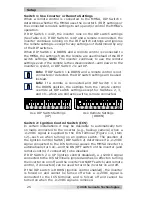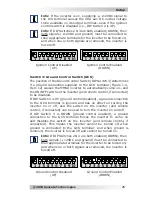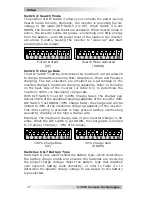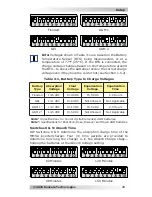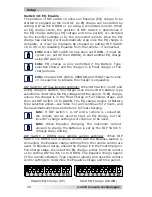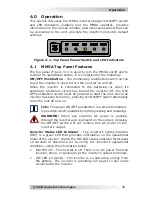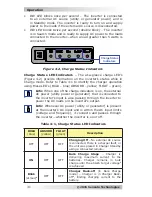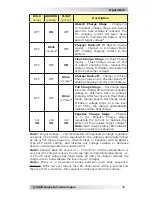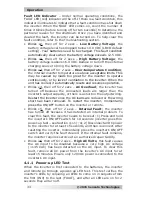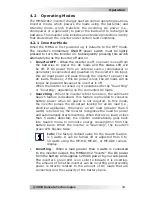
© 2015 Sensata Technologies
Operation
39
4.4 Battery Temperature Sensor Operation
The plug-in Battery Temperature Sensor (BTS) is used to determine
the temperature around the batteries. This information allows the
multi-stage battery charger to automatically adjust the battery
charge voltages for optimum charging performance and longer
battery life.
When the BTS is installed (Figure 2-6), if the temperature around
the BTS is below 77°F (25°C) the absorb and
fl
oat charge voltage
increases. If the temperature around the BTS is higher than 77°F
(25°C), the absorb and
fl
oat charge voltage decreases. See Figure
4-4 to determine how much the charge voltage changes (increases
or decreases) as the temperature reading of the BTS changes. For
example, the nominal absorb charge voltage for a
fl
ooded battery
at 77°F (25°C) is 14.6 VDC. If the battery temperature is 95°F
(35°C), the absorb charge voltage would decrease to 14.3 VDC
(14.6 VDC – 0.3 change).
If the temperature sensor is NOT installed, the charge voltages are
not compensated and the battery maintains the charge it had at a
temperature of 77°F (25°C). Without a BTS, the life of the batteries
may be reduced if they are subjected to large temperature changes.
Info:
When the BTS is connected, the battery charger uses
a value of –5mV/°C/Cell from 0 to 50°C to change the
charge voltage based on temperature.
Figure 4-4, BTS Temperature to Voltage Change
Temperature reading from BTS
Temperature Compensation using BTS
0C
32F
5C
41F
10C
50F
45C
113F
30C
86F
40C
104F
35C
95F
25C
77F
20C
68F
15C
59F
50C
122F
Change to battery charging voltage
no BTS
connected
-0.15V
-0.3V
-0.45V
-0.6V
-0.75V
12VDC units
+0.75V
+0.6V
+0.45V
+0.3V
+0.15V
No Change

